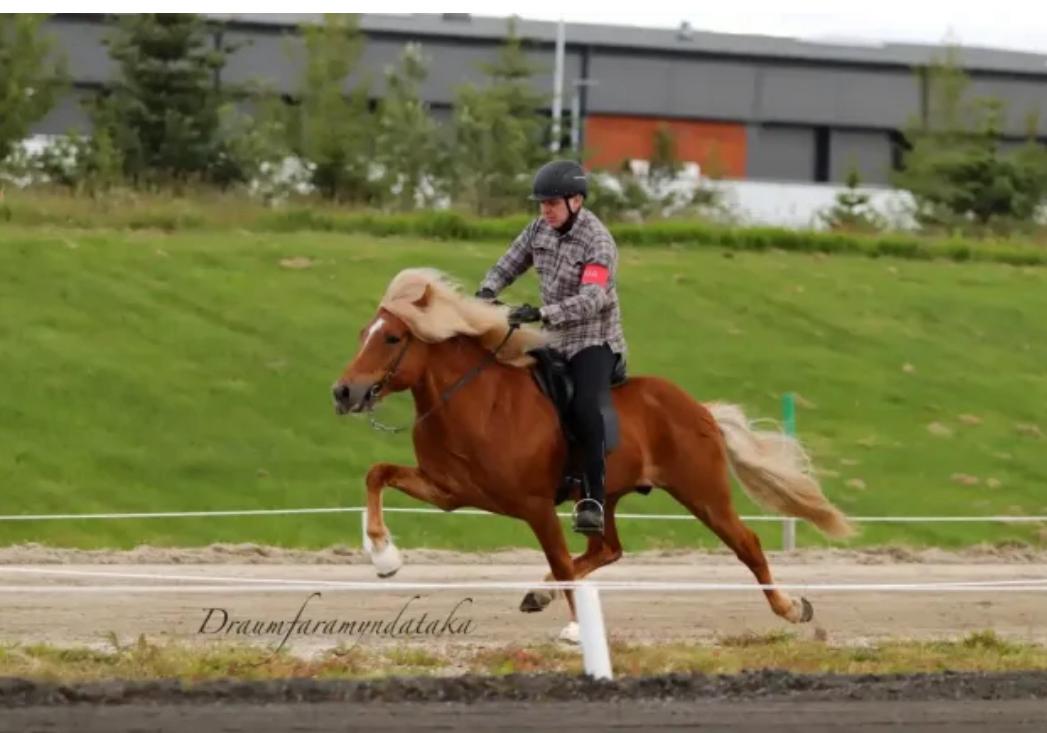One of the tools available for breeders of Icelandic horses are the BLUP values (estimation of breeding value). This is a tool that summits all available information from breeding assessments of all individuals in the population, estimates their breeding value and ranks them based on their expected contribution to the development of the breed. The scale is set with 100 as the average value and one standard deviation (std) is 10 units. The population of horses is distributed on 6 std, with only a few horses outside of the range of 70-130. The recommendation is to not use individuals for breeding that are below 100 in BLUP, as their contribution is likely to be in a negative direction, compared to the official breeding goals for the breed. In this context it is important to take the accuracy into account, that differs from one horse to another. The more information that is available about parents and relatives, the higher the accuracy of the estimation. Accuracy below 60% should be interpreted as relatively uncertain estimation.
The BLUP calculations for Icelandic horses are done for the entire population (all registered horses in all countries) which is unique in the equestrian world. It is the Farmers Association in Iceland that is responsible for the calculations and the development of the system. It is today Dr. Elsa Albertsdóttir, breeding leader of Iceland, who is responsible for the calculations and the development, with big support from Dr. Þorvaldur Árnason who has been the drive force behind the development of the method for Icelandic horses from the start (as well as for many other horse breeds). The idea with the BLUP is to rank the individuals and with an international BLUP it also becomes possible to compare individuals between countries. This was possible for the first time in 2004 after several years of preparations where the most important steps were of course that all countries registered horses into the same database (WorldFengur) and horses were assessed with the same assessment system (FEIF).
Corrections for systematic environmental factors
The BLUP method for estimation of breeding values is an incredibly robust method. The BLUP values reflect the individual’s genetic capacity in comparison with all other individuals within the population, which includes that it takes all known systematic environmental factors into account, and corrects for them. The purpose of those corrections is to make the assessments comparable between individuals. Examples of systematic environmental factors in Icelandic horses is the age and sex; stallions are systematically earlier in their development, compared to mares and the horse’s performance improves systematically with increased age. As the assessment system develops and the quality of the horses improves year by year due to genetic improvement, the year of the assessment is also a systematic environmental factor. The fourth systematic environmental factor that has been corrected for in the calculations is the country of assessment. When the FEIF assessment system was integrated in the early 2000 there were differences in the facilities and the tracks, in the procedures at the shows and the rotation of judges between countries was insufficient. This led to a systematic difference in the results between countries, that needed to be corrected in the calculation of the BLUP values.
Country of assessment no longer systematic environmental factor
For various reasons it is no longer relevant to treat the country of assessment as a systematic environmental effect, which is why an updated BLUP will be published in WorldFengur where all assessments are treated the same, regardless of country. The correction for year of assessment, sex and age remains the same.
When the BLUP has been corrected for the country of assessment, it has been done on the basis of the averages in each country, in comparison with the averages in other countries. The simplified explanation is that the correction has been based on how far the scores for the individual have been from the average scores in the country, that year. The relatively lower the average scores were in each country, the lower the scores needed to be for an individual to be above average. In the updated BLUP, that will be published in WorldFengur within a few days, the ranking of horses within each country is more or less the same as before, but there will be some changes is the ranking of horses internationally. Horses that are rising in the international ranking are in general likely to get a higher BLUP total than before, and horses that are falling down in the international ranking will in general get a lower BLUP total than before. The effects are most likely to be seen in stallions that have offspring that are mostly assessed in the same country, where some stallions have previously been overestimated in an international comparison, and others have been underestimated. The main thing is that the international comparison of horses will now be more accurate, while there is more or less no difference in the comparison of horses that are shown within the same country.
FEIF Evaluation Group: Ágúst Sigurðsson, Elsa Albertsdóttir



